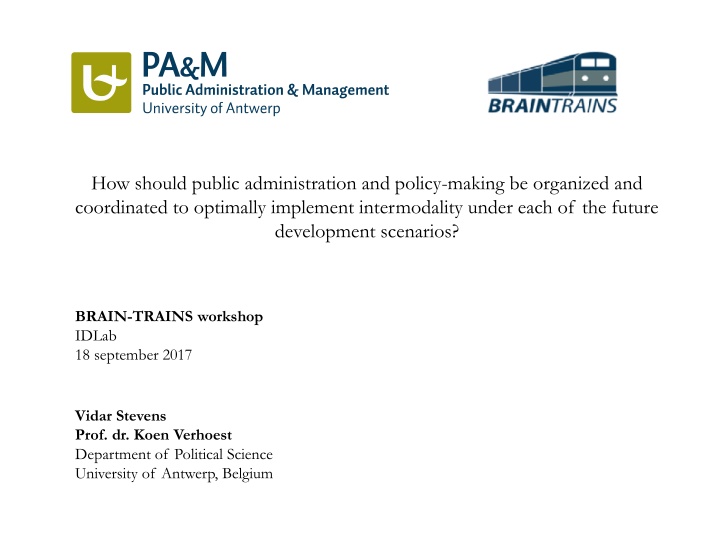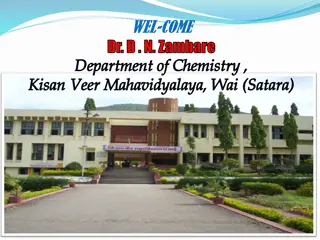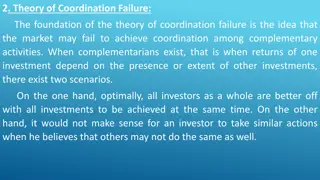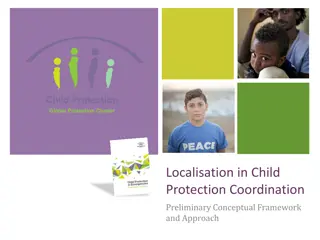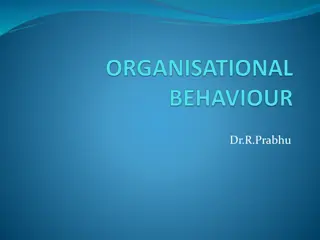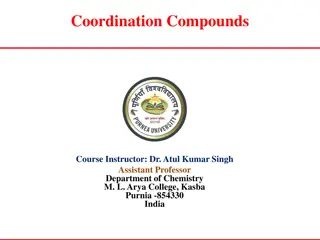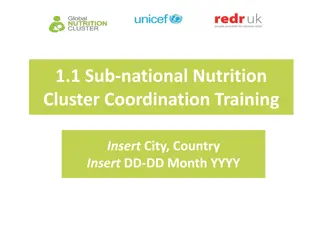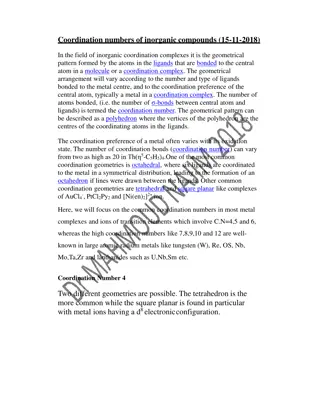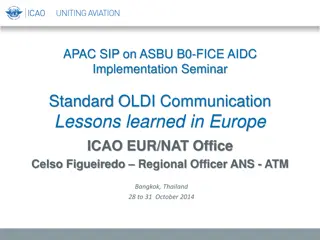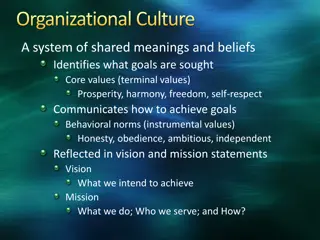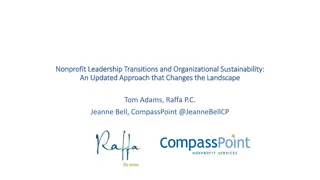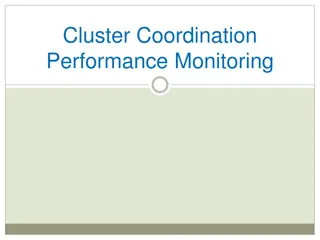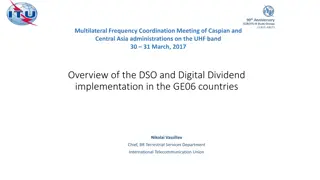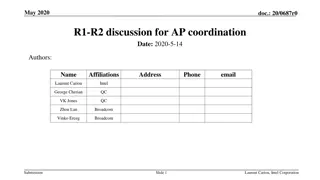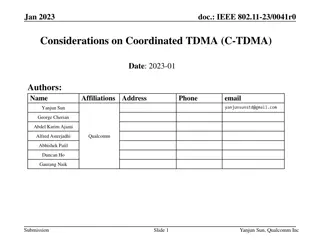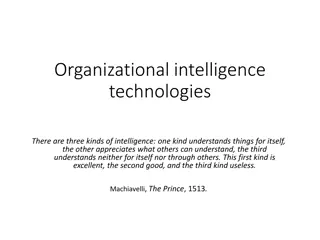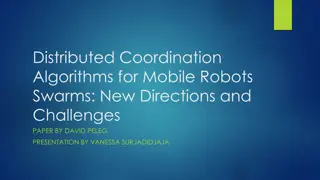Implementing Intermodality: Organizational Coordination Strategies
Optimal organization and coordination of public administration and policy-making to effectively implement intermodality under different future development scenarios. Learn about governance concepts, policy-level integration, administrative coordination, and actor involvement in this insightful workshop.
Download Presentation

Please find below an Image/Link to download the presentation.
The content on the website is provided AS IS for your information and personal use only. It may not be sold, licensed, or shared on other websites without obtaining consent from the author.If you encounter any issues during the download, it is possible that the publisher has removed the file from their server.
You are allowed to download the files provided on this website for personal or commercial use, subject to the condition that they are used lawfully. All files are the property of their respective owners.
The content on the website is provided AS IS for your information and personal use only. It may not be sold, licensed, or shared on other websites without obtaining consent from the author.
E N D
Presentation Transcript
How should public administration and policy-making be organized and coordinated to optimally implement intermodality under each of the future development scenarios? BRAIN-TRAINS workshop IDLab 18 september 2017 Vidar Stevens Prof. dr. Koen Verhoest Department of Political Science University of Antwerp, Belgium
Agenda What is (public) governance? What level of policy-level and administrative integration are required to turn scenarios into reality? Coordination toolbox for intermodality The involved actors
Act I What is governance? Joint capacity to steer society
3 models New Public Governance New Public Management Bureaucracy 1900s 1980s 2000s
Bureaucratic governance Relations based on Hierarchy Routines, procedures, permanence Competence-based Paper trail Rule of law (householdname: Max Weber)
New Public Management Relations based on Competition Private sector management Performance contracts Privatisation Downsizing (household name: Margaret Thatcher)
New Public Governance Relations based on Cooperation Private Private partnerships Integration and coordination Networks (household name: tbd)
Different forms of integration Policy-level integration refers to the extent to which political actors try to create greater coherence in decision-making for issues that transcend the boundaries of established policy fields, and which do not correspond to the institutional responsibilities of individual departments (Meijers and Stead, 2009). Administrative integration, then, denotes the extent to which involved administrative actors (together with private or privatized companies, civil society organizations, etc.) streamline practices and collaborate in the policy implementation phase (Mulford and Rogers, 1982).
Act II The current and expected levels of policy- level and administrative integration in the scenarios.
Current level of policy-level integration - Autonomous decision-making between political actors from different levels of government regarding the transposal of the EU ITS-directive. - Minimal policy coherence between federal and regional levels of government to comply to the set targets of the EU-level. - Up till now, there has only been very limited collaborative effort to establish a comprehensive and uniform policy strategy that transcends the different levels of government
Current level of administrative integration
Act III Coordination toolbox
A Graveyard of Collaborations (Cleff, 2008) 70%
The collaboration as determinant? For different reasons, the collaboration itself can hinder at different stages of the policy-making and implementation process , according to Manoharan (2013) and Mulgan & Albury (2003).
How to manage the collaboration in the policy cycle? Policy-level integration/ design Administrative integration/ implementation
Managing the design-phase From ideas to plans.
Resolving substantive uncertainty Furtherance of goal intertwinement. Promotion of substantive variety. Breaking through asymmetrical policy discussions. Preventing premature cognitive fixations. Promoting cognitive reflection. Organizing substantive selection. Linking arenas of research and problem solving. Facilitating instead of decisive research. Joint commissioning of research. Boundary work.
Resolving strategic uncertainty (Un)coupling actors, arenas and games. Designing games, agreements about: objectives; participation; working methods; information-sharing; process-steps; decision-making. Actively engaging in substantive discussions (hands-on management approach).
Resolving institutional uncertainty Changing network rules focused on composition. Changing network rules focused on outputs. Changing network rules focused on interactions. Reframing through the launch of major plans. Reframing through narratives. Reframing through sensitizing concepts. Reframing through the use of focusing events. Managing trust through institutional redesign. Redesigning the primacy of politics.
Managing the implementation-phase From plans to services.
Right representation, skills and competencies
Organizational cultures that support coordination
Act IV Who has to be involved?
Different players Stakeholders: public interest groups (NGOs), trade unions, harbour unions, business interests, occupational associations, etc. Agencies, semi-autonomous organizations, statutory bodies, private (law) based organizations, harbours, etc. Peripheral departments: Federal and regional (affected) departments. Central departments: Federal and regional Departments of Mobility. Political core: Ministers and cabinet members.
Different type of organizations, different levels of government.
Who should take the lead? At the political-level? A Federal Minister? A regional Minister? From Wallonia, Brussels Capital Region or Flanders? A neutral facilitator? At the administrative level? An intergovernmental coordination network? An expert group? A follow-up committee? Separate administrative leaders for each level of government?
How many and which actors must be involved in the decision-making? Only the political core? Solely Ministers of Mobility, or also of Ministers of (affected) departments (e.g. economy, finance, environment)? An administrative network? How many departments and agencies? And when is a department/agency relevant or affected enough to join the collaboration? Stakeholders? How to select the right stakeholders?
Outlook? Detailed? How long-term should the policy strategy be? An outlook to 2020? 2030? 2050? 2100? And how to deal with long-term policy strategies when there are new elections? How detailed must the policy strategy be? Only output parameters? Abstract future outlooks? Detailed, and non-reversible, policy strategies.
